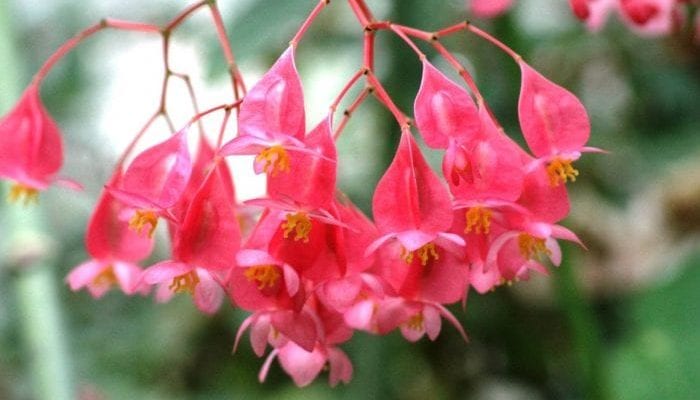The sub-tropical zone is home to plants from the garden’s Evolution and Useful Plants Collections, including displays of Angiosperm Phylogeny, Floral Diversity, Adaptation to the Environment and Chinese Medicinal Herbs.
Central to the display is a raised bed planted to represent a sub-tropical montane forest (those forests at middle to high altitude, which derive a significant part of their water from mist and cloud). Here three artificial trees have been erected to provide a home to displays of epiphytic plants including some of the Garden’s collection of orchids. These are the most diverse family of flowering plants with some 30,000 species. A wide range of plants are grown including the sweetly scented Zygopetalum mackayi and Stanhopea oculata. Amongst these the kapok tree Ceiba pentandra and fish tail palm Caryota mitis grow, representing tall forest trees and palms while the shrub layer is represented by a collection of shrubby and climbing fig species.
A collection of ancient cycads, ferns and anthuriums represent the ground flora. A fallen tree is the setting for ancient flowering plants known as Basal Angiosperms: Sarcandra chlorantha, Piper longum, Aristolochia trilobata and Peperomia blanda displayed as part of the Evolution of Land Plants Collection. Amborella trichopoda is the most ancient basal angiosperm and is sometimes displayed here. Economically important plants such as coffee, Coffea arabica and tea Camellia sinensis are displayed in the montane forest display alongside a collection of ten sub-tropical Ficus species which have unique relationships with their wasp pollinators.
The surrounding benching is home to various collections of orchids, bromeliads, gesneriads, impatiens, begonias and carnivorous plants illustrating adaptation to the environment and flowering plant diversity. Mosses, liverworts, whisk ferns, selaginellas and ferns are displayed along one bench as an indoor display supporting the main Evolution of Land Plants display which can be seen outdoors in the Evolutionary Dell. Chinese Medicinal Herbs such as the fern Cibotium barometz are also grown here.







